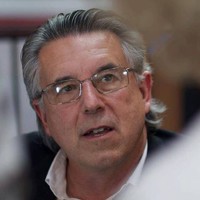Editor’s note: This is the first of a two-part series about some of the most “interesting” and noted Kentuckians throughout history and present, according to people around the state.
By Steve Flairty
NKyTribune columnist
Who are some of the most interesting and noted Kentuckians, past or present?
I was curious about who people throughout the Commonwealth would name, and I made it clear that the word “interesting” may — or may not — indicate someone necessarily admirable. Most everyone I contacted mentioned positive individuals, though, and maybe that’s a good thing for keeping us inspired.
Although there are literally hundreds of Kentuckians I find intriguing, I seem to come back to Isaac Shelby as a favorite.
Here’s why. Shelby presided as both the first and fifth governor of the state. Many sought him out to run the second time after many years because of his amazing leadership and contributions to the state and nation. He was also a state legislator in Virginia and North Carolina. He fought in Lord Dunmore’s War, the American Revolution, and the War of 1812 (for which he led the Kentucky militia in the Battle of Thames and was rewarded with a Congressional Gold Medal while he was governor).
Need more examples of Shelby’s amazing resume? He was asked but turned down President James Monroe’s request to become Secretary of War. Along with Andrew Jackson, he negotiated the acquisition of the Jackson Purchase from the Chickasaw tribe. I encourage you to research more about this influential Kentuckian.
Owensboro resident Amy Foreman named several covered by her from her teaching career, starting with Happy Chandler and Pee Wee Reese.
“There were a lot of discussions, but the kids were fascinated and proud when I brought out the role Kentucky played in breaking the color barrier. Two good men doing the right thing,” said Foreman.
She also named Kentucky’s iconic senator, Henry Clay, known as “The Great Compromiser,” and Bill Monroe often considered the founder and father of Bluegrass music.
Along with those well-known spirits, Foreman mentioned one perhaps less known, yet highly interesting. Moneta J. Sleet, Jr., from Owensboro, was a photographer for Ebony magazine, who, she said, “won a Pulitzer Prize for his picture of Coretta Scott King at her husband’s funeral.”
Jason Decker, of Lenoxburg, introduced me to another fascinating Kentuckian, this one from my native northern part of Kentucky. Notably, he found the information while researching his wife’s family history.
“Jack Dawn, born and raised in California (some sources say Covington), in Campbell County, was the head of makeup for MGM and created most of the Wizard of Oz characters working with Judy Garland, Bert Lahr, Margaret Hamilton, Ray Bolger and Jack Haley,” said Decker. “As well, (he did) makeup for over 100 feature films working with all the Hollywood legends of the time.”
Additionally, according to Decker, Dawn created and held the patent on Vinylite Resin masks, used to help veterans with disfigured facial features incurred from World War II combat wounds.
“Mary Todd Lincoln could have been the country’s finest First Lady, but struggled against prejudice, criticism, losses, and great griefs,” said Lexington author Karen Leet. “She was seen as a traitor to the Union. She was vilified for her expenses—though few were aware that she sat beside injured and sick soldiers, wrote letters home for them, brought items from the White House and later helped care for former slaves who came to Washington (her dressmaker had called for help). She could not handle grief, losing three sons before her own death.”
Former Winchester teacher and baseball umpire Andy Stephenson, now living in Knoxville, Tennessee, commented on his interesting Kentuckian, “(It’s) hard to leave out Jim Bunning (who) served in U.S. Senate and threw the seventh perfect game in Major League history.”

I might add that my mother was a housekeeper for the Bunning family and I recall him attending my brother’s wedding reception in Alexandria. I received some free tickets to games, too!
Dave Robertson’s person of state interest is a nationally known clairvoyant from the past.
“Being that Jean (Dave’s wife) is from Hopkinsville,” he said, “I’ll go with Edgar Cayce. Even the most in-depth analysis may list what he did but still fails to explain how he did it.”
William Whitney was the name Nicholasville resident Rita Setness offered. Her positive thoughts originated as a child.
“I grew up going to the William Whitley House,” she said. “My family is from Crab Orchard, in Lincoln County, where his home was. Growing up, we had our family reunions on the William Whitley grounds and I have toured his wonderful home many times. I love how his wife, Esther, was such a great shot and did her part protecting the family against attacks by the local Native Americans. William Whitley rejected all things British. So much that when he made a racecourse for horse racing, the horses ran counterclockwise instead of clockwise as the British. It is believed that this began the Kentucky tradition of (counterclockwise) horse racing.”
Another horse racing story concerns the fascinating life of black jockey Jimmy Winkfield, shared by Lexington historian Foster Ockerman, Jr.
“He was born in the hamlet of Cleveland, in Fayette County, which has disappeared but was the source for the Cleveland Pike,” said Foster. “He crossed John E. Madden, who ran him out of U.S. racing. He went to Europe and ended up being the chief jockey for Czar Nicholas II, and he lived on Red Square. He had a white duchess wife. He fled to Normandy upon the Revolution and established a successful breed and racing farm with the Czar’s horses, which he rescued.”
We’ll add to the list next week…


























